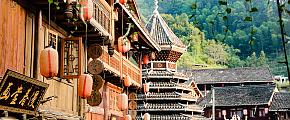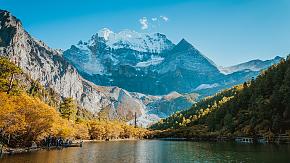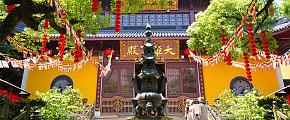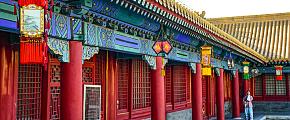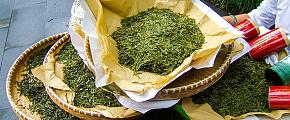Top 8 Cultural Wonders to Visit in China
China, the one and only, abounds in numerous natural landscapes, from the wonders of the Gobi Desert and scattered oases in the west to the magnificence of a range of mountains in the middle, from the scenery of the freezing snow of the north to the beauty of sand beaches in the south. China must be a destination that travelers who value natural beauty look forward to visiting. On the other hand, China, with a history stretching back to antiquity, is veritably one of the countries in the world with the earliest civilization. The country also boasts a great variety of breathtaking cultural sites. For visitors interested in exploring ancient cultural wonders, China is also an ideal destination. Too many cultural wonders exist to make a choice. Here is a list of the top 8 cultural wonders to visit in China. Let's begin with Beijing.
Forbidden City
The Forbidden City was built in 1420 as an imperial palace between the Ming and Qing dynasties. It was included in the UNESCO World Cultural Heritage List in 1987. Today, the magnificent palace has been established as a national museum. From above, the Forbidden City appeared symmetrical, surrounded by a 10-meter-tall wall and surrounded by a deep, wide moat. There are 9999 rooms in total and more than 70 halls and palaces within them. The spectacular palace was once an exclusive place for emperors. But it has been increasingly attractive to tourists since its opening to the general public.
Considered the largest and most complete imperial complex in the world, the Forbidden City has many fascinating palace buildings to visit. The palaces and halls are constructed of redwood on a green and white stone foundation, with a yellow glazed tile roof. The biggest palace in the Forbidden City is the Hall of Supreme Harmony, where the emperor held a grand ceremony. The hall, inside and out, is decorated with thousands of golden dragons, and its ridges have 10 auspicious beasts. The hall remains solemn and magnificent despite many periods of destruction and reconstruction.
Another famous palace is the Hall of Central Harmony, a 19-meter-high structure where the emperor would rest before the grand ceremony. The Hall of Central Harmony features a single eave like a huge pavilion. The Hall of Preserving Harmony is unique for its glittering golden floor tile and carved thrones covered with gold leaf. Otherwise, the Palace of Heavenly Purity and the Palace of Kunning also appeal to a great number of tourists.
Apart from the gorgeous palace buildings, the Forbidden City also boasts an extensive collection of valuable cultural relics, including paintings, calligraphy, porcelain, and bronzes. The whole palace collected a variety of curiosities from regions of China and the world. You will feel dreamy in this treasure trove.
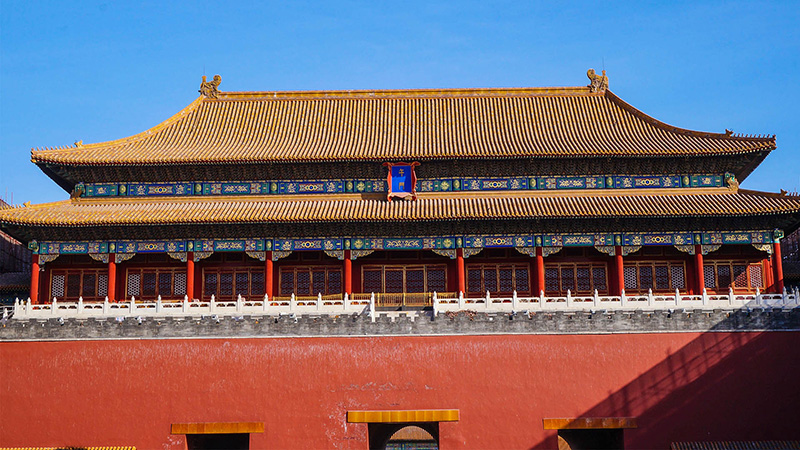 Forbidden City, Beijing
Forbidden City, Beijing
The Great Wall
Have you read a line that says, "He who doesn't reach the Great Wall is not a true man?" Traveling along the Great Wall is definitely a test for you. The Great Wall, in fact, is not only one wall. It was an ancient Chinese fortification on a drastically gigantic scale. The oldest part of the Great Wall was built during the Warrior States Period, with a history spanning over 2000 years. The Great Wall has a total length of more than twenty thousand kilometers, nearly across the north of China.
The most famous part of the Great Wall is the Badaling Great Wall, built in the Ming Dynasty as a strategic thoroughfare leading to Shanxi and Inner Mongolia. Badaling's Great Wall has an extremely rugged landscape. Tourists can enjoy a remarkable view of lines of green mountains. When the Great Wall is overlooked, it appears to be a massive dragon coiling up on the mountains.
Located in Hebei province, Shanhaiguan served as a vital gateway to the northeast of China during the Ming Dynasty. Now it has become one of the most famous attractions to visit. Shanhaiguan lies between mountains and the sea. The gateway has four grand gates and many different types of defensive buildings. If you have good luck, you may see the gate tower in a shroud of mist.
As a part of the Great Wall, Jiangyuguan is as vital and grand as Shanhaiguan, but its location is not in Beijing but in Gansu province.
 The Great Wall, Beijing
The Great Wall, Beijing
Terra-cotta Warriors and Horses
This is a spectacular ancient army underground, just a small part of the Mausoleum of the First Qin Emperor. Terra-cotta Warriors and Horses in Xi'an is renowned as the "Eighth Wonder of the World". It was first discovered in a small village in 1974. By 2021, archaeologists will have unearthed three terracotta warrior and horse pits, which together contain a total of over 9000 figures, including 130 chariots and 520 horses. More than that, many different types of ancient weapons were excavated in pits.
In the first pit, there are a variety of types of pottery warriors who play different roles in the army. The sculptures of soldiers, horses, and chariots were made in life size. You will surprisingly find that each of the figures is dressed differently, with different hair styles, gestures, and facial expressions. It is said that the figures remained beautiful in color when they were just unearthed. Even so, the Terra-cotta Warriors and Horses remain so impressive that leaders and heads of government around the world are drawn in.
Standing in the pits, you may believe you are inspecting well-trained troops and that the army is poised for a major victory. All the sculptures are so vivid that you can catch every nuance of each warrior by watching intently. Terra-cotta Warriors and Horses have become a bright calling card to demonstrate ancient China's splendid civilization and skillful craftsmanship 2000 years ago. The breathtaking cultural wonder is certainly worth a visit.
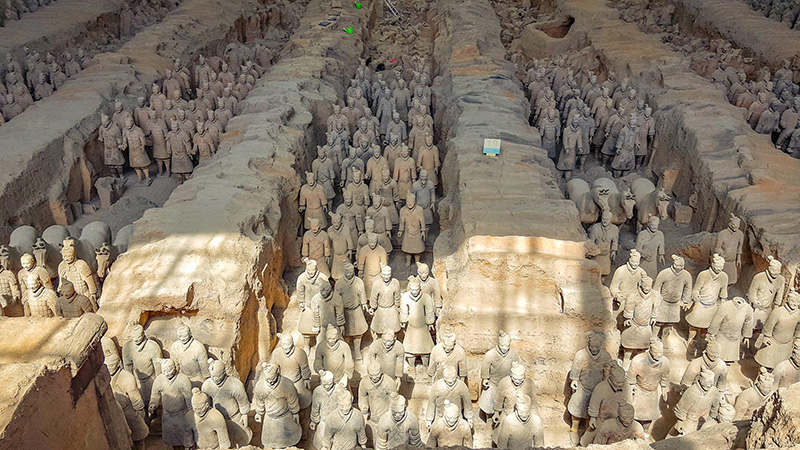 Terra-cotta Warriors and Horses, Xi'an
Terra-cotta Warriors and Horses, Xi'an
The Classical Gardens of Suzhou
Suzhou is also known as "Venice of China", due to its many murmuring rivers. Suzhou has earned its place on the exclusive list of the most aesthetic and elegant gardens in the world. The Classical Gardens have definitely become the symbol of Suzhou. As a traditionally distinctive art form, the Classical Gardens are the most incredible attractions in Suzhou and are drawing larger and larger tourists.
The gardens were designed and built on the basis of cultural aesthetics and an aspiration for natural scenery in the ancient city of Athens. They are a symphonic combination of rocks, water, trees, and various types of buildings that reveal Chinese attachment to nature and pursuit of natural harmony.
The majority of the surviving gardens were constructed between the Ming and Qing dynasties. They have scaled-down versions of real mountains and lakes. You can see a dramatic combination of pavilions, terraces, towers, fountains, rocks, flowers, and trees. This is a magical paradise portrayed in Chinese paintings and poetry. Every corner in the gardens is dotted with an artificial hill, a ruffled pond with a small bridge, and lush green vegetation. The gardens feature a special kind of window on the wall, through which tourists can enjoy a unique landscape in one room, but when you watch outside the room, it's a strikingly different picture.
The gardens are not only used for appreciation and visits but also for housing. The Classical Garden of Suzhou is a truly desirable destination for tranquility and elegance. They provide men of letters with an ideal life of working and living in nature. The Classical Garden of Suzhou has many famous gardens that fascinate tourists around the world, like the Humble Administrator's Garden, the Lingering Garden, and the Master-of-Nets Garden.
Leshan Buddha
Located in Leshan, Sichuan province, and at the confluence of the Minjiang, Qingyi, and Dadu Rivers, the Leshan Grand Buddha was built between 739 and 803 during the Tang Dynasty and took 90 years to complete. The giant Buddha measures 71 meters in height, and the top of his head has 1051 chignons. His ears are 7 meters long, which is a symbol of wisdom. The stone statue is as high as the mountain and sits seriously facing the Minjiang River, with two hands on the knees. He was carved from a cliff. Although Leshan Buddha has been exposed to nature for more than 800 years and has been weather-beaten and ruined by man many times, he remains vivid and spectacular for tourists to appreciate.
You can stand beside the base of the statue, looking up at Leshan Buddha. It will offer you an incredible view. Or you can cruise down the Minjiang River, watching the overall scenery of Buddha's serene
Leshan Museum is also close to the Grand Buddha and surrounded by mountains. The appearance of the museum is extremely modern and is colored red. The museum has over 200 precious cultural relics, including ceramics, stone carvings, and different kinds of paintings and calligraphy. Leshan Museum is an ideal destination for visitors who are intrigued by stories of the Buddha.
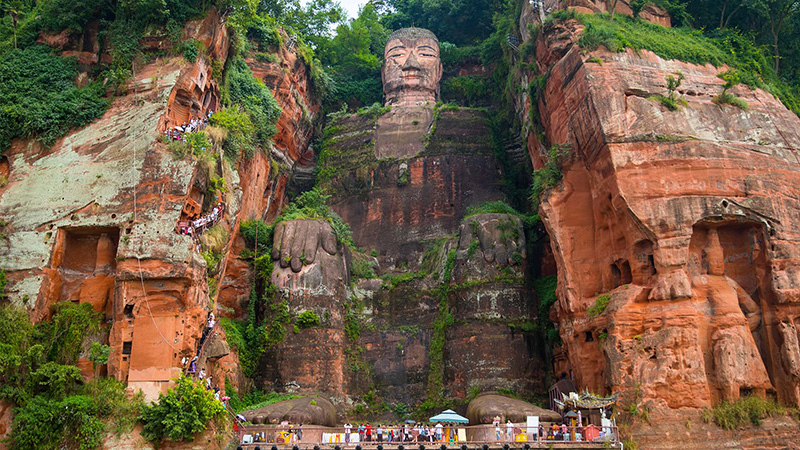 Leshan Giant Buddha, Sichuan
Leshan Giant Buddha, Sichuan
Longmen Grottoes
Located in Luoyang, Henan Province, the Longmen Grottoes are the world's largest grotto with the most sculptures. It took a total of more than 1400 years to carve the grottoes and all the figures, from the Northern Wei Dynasty (368–534) to the late Qing Dynasty. A total number of statues in the grottoes tops 11,000.
The magnificent Longmen Grottoes embody the ancient Chinese emperors' strong faith in Buddhism. In addition to this, many ancient foreigners got involved in grotto carving, which made the Longmen Grottoes the most internationalized grottoes in the world, featuring Europe-styled statues, instrument sculptures from the western region, and stone columns of ancient Greek.
On the west and east banks of the river, a line of grottoes can be seen. On the west side, you'll find the majority of the important Buddhist carvings.
Lushena Buddha, on the west side of the river, exemplifies the artistic level of Longmen Grottoes at its best. It is described as the most beautiful statue worldwide. The statue is famous for its smile and is thus praised as the "Mona Lisa of the Orient" by many tourists from overseas. The masterpiece is about 17 meters high, and its face was carved based on that of Wu Zetian, the only empress in Chinese history.
There are also many grottoes worth your visit, such as Guyang Grotto, Binyang Central Grotto, and Lotus Grotto. A variety of exquisite frescoes were painted on the grottoes, which will tell you the stories and events happening during these dynasties in the history of China. The badly faded Thousand Arm and Thousand Eye Guanyin remains so delicate and spectacular that it will catch your eye. The Xiangshan Temple is perched against a hill at the head of a steep flight of stairs. Originally constructed in 516, it has undergone numerous restorations. After you've seen the temple, you can make your way to the tomb of Bai Juyi, an eminent realistic poet in the Tang Dynasty.
Dunhuang Mogao Grottoes
The Mogao Grottoes are thought to be one of the most significant Buddhist art collections in the world. Considered resplendent treasure houses of art from ancient Chinese civilization, they were listed as World Cultural Heritage sites in 1987. The Mogao Grottoes were built in Dunhuang, at the end of the Hexi Corridor, which has served as an important hub connecting China with the West since the Han Dynasty. Thus, the Mogao Grottoes bear witness to communication among different civilizations along the ancient Silk Road.
The Mogao Grottoes include 735 grottoes, preserved wall paintings covering a total area of over 45000 square meters, and more than 2400 colored sculptures. The Mogao Grottoes consist of two parts. One is the South Grottoes, with 493 grottoes, used for ceremonies to worship Buddha, and the other is the North Grottoes, including 243 grottoes, used for quarters of monks and craftsmen.
Dunhuang Mogao Grottoes are also known as "Thousand Buddha Caves". You will be impressed by the nine-story wooden pavilion, at a height of 45 meters. The old building just leans against the cliff to protect the Mile Buddha in the grotto from a raging sandstorm.
The Library Cave, the Seventeenth Grotto, is famous for its vast collection of ancient Buddhist scriptures, exquisite paintings, and a beautiful large piece of embroidery.
A wide variety of wall paintings is a special feature of Mogao Grottoes. You can enjoy numerous wall paintings of Buddha. Watching some wall paintings, you can read many stories of Chinese myths and the good deeds of Buddha. Every grotto at Mogao Grottoes is a magnet for visitors.
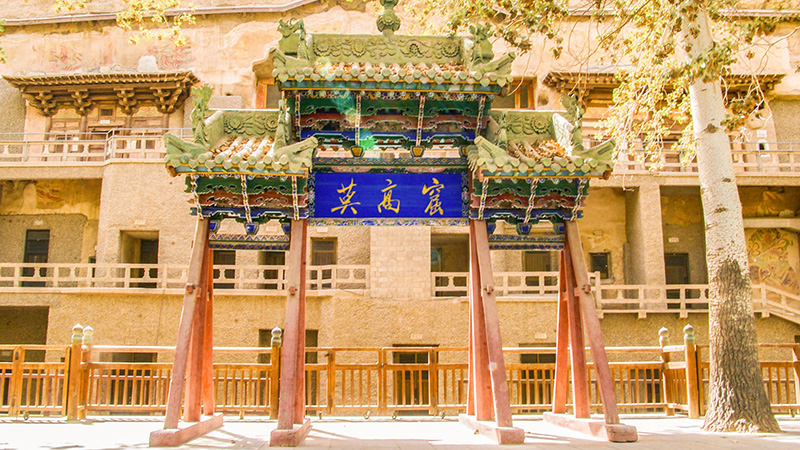 Mogao Grottoes, Dunhuang
Mogao Grottoes, Dunhuang
Potala palace
Potala Palace is situated on the Red Hill of Lhasa city, in the Tibet Autonomous Region, a sacred destination full of amazing and magical scenery of mountains, glaciers, and lakes. The castle-styled palace sits at an altitude of 3700 meters and boasts a long history of about 1300 years. Potala Palace had been serving as the political center of Tubo Kingdom for about 10 decades. It symbolizes the highlights of ancient Tibetan architectural art. And it was approved by UNESCO as "world cultural heritage" in 1994.
Outside the palace, it is covered with glorious gold on the roof and decorated with flags of red, white, and yellow swaying in the wind. The palace is divided into two sections: the White Palace in the east, which houses the Dalai Lama's living quarters and offices, and the Red Palace in the center, which houses the worship of several previous Dalai Lama. Inside the palace, it is full of many different types of figures of Buddha. The walls are dotted with gorgeous frescoes and paintings. Different seasons will embellish the appearance of Potala Palace. On a clear day, the palace looks fascinating against the blue sky, while in winter it is fantastically white.
As one of the world's unique cultural wonders, Potala Palace is also a veritable treasury of cultural relics that possesses a large number of exquisite porcelains, figures of Buddha, paintings, and a vast collection of ancient codes and records.
Design Your China Adventure with Odynovo
In a word, China, a desirable and unforgettable country, is a treasure trove for people around the world to explore. Here you can experience authentic Oriental culture. From the ancient architecture of the imperial palace and classical gardens to different types of Buddhist sculptures, every cultural site stands for part of Chinese culture. Every sight and view of the eight wonders will offer you different experiences and distinctive memories. You will find them amazingly well-preserved for over a thousand years. China is a must-see destination. So, take a long journey with your family to China. You can keep in touch with us for more detailed travel information on China. Furthermore, we offer many tourist routes designed for families and other visitor-oriented services.
What Our Clients Say
"Great Customized Service", "Trip of A Lifetime", "Exceed All Expectations"

